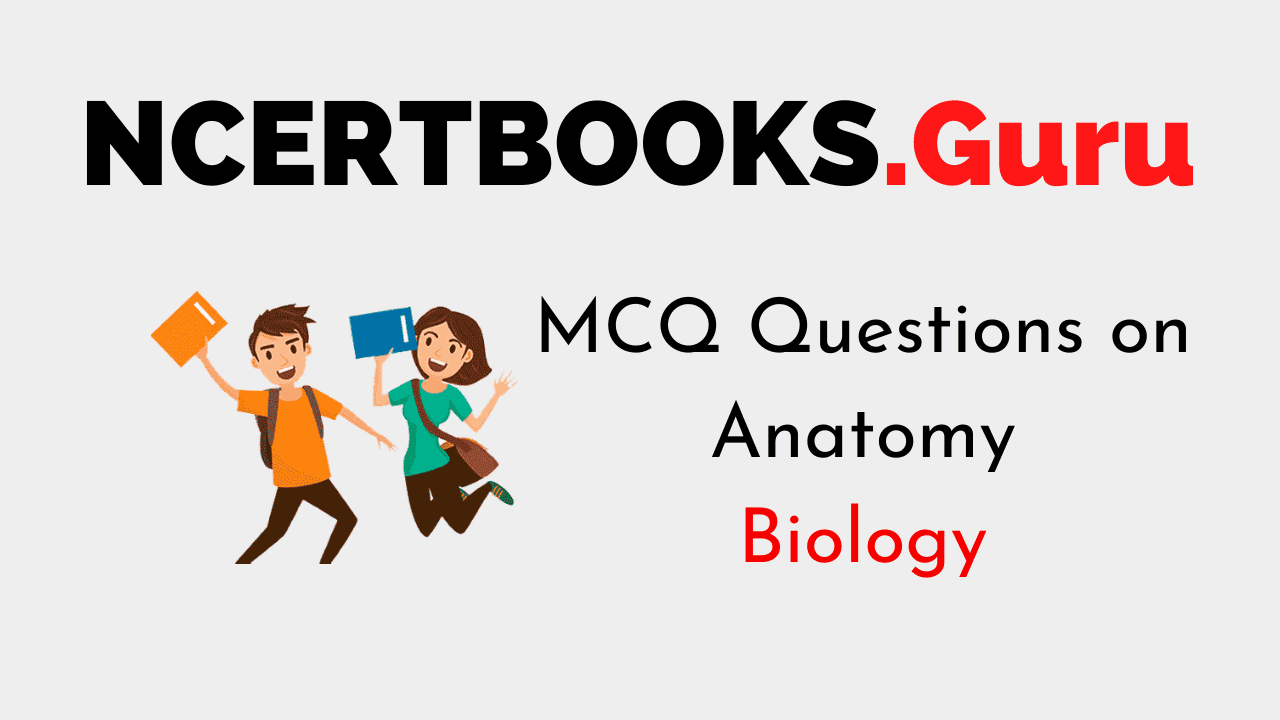Biology is the study of life. Below, You will find a list of Biology MCQ Questions as per the latest prescribed syllabus. Ace up your preparation with the Objective Questions available on Anatomy and enhance your subject knowledge. Understand the concept clearly by consistently practicing the Multiple Choice Questions and score well in your exams.
MCQ Questions on Anatomy
1. Which of the following muscles flexes both hip and knee joints?
(a) Sartorius
(b) Biceps femoris
(c) Rectus femoris
(d) Gluteus Maximus
Answer
Answer: (a) Sartorius.
2. Which of the following are not the features of cerebellar lesions?
(a) Nystagmus
(b) Intention tremors
(c) Dysdiadochokinesia
(d) The rigidity of voluntary muscles
Answer
Answer: (d) Rigidity of voluntary muscles.
3. Which of the following conditions show negative for Trendelenburg’s test?
(a) Fracture neck femur
(b) Dislocation of hip
(c) Paralysis of gluteus maximus
(d) Paralysis of the gluteus medius
Answer
Answer: (c) Paralysis of gluteus Maximus.
4. Gyrus occupying Broca’s speech area is called___________.
(a) Superior temporal
(b) Inferior frontal
(c) Middle frontal
(d) Superior frontal
Answer
Answer: (b) Inferior frontal.
5. Which of the following structures is likely to get injured when there is a sudden rotation of a semi flexed knee?
(a) Medial meniscus
(b) Anterior cruciate ligament
(c) Lateral meniscus
(d) Posterior cruciate ligament
Answer
Answer: (a) Medial meniscus.
6. Which of the following structures are found at the level of the oculomotor nerve nucleus in the midbrain?
(a) Decussation of superior cerebellar
(b) Pretectal nucleus
(c) Substantia nigra
(d) Red nucleus
Answer
Answer: (a) Decussation of superior cerebellar.
7. Which of the following is not the components of the superficial perineal pouch?
(a) V. dorsal nerve of the penis
(b) Dorsal artery of penis
(c) Bulbourethral gland
(d) Superior transverse perineal
Answer
Answer: (c) Bulbourethral gland.
8. What is an abnormal lateral curvature of the vertebral column known as?
(a) Kyphosis
(b) Scoliosis
(c) Lordosis
(d) Spondylolisthesis
Answer
Answer: (b) Scoliosis.
9. The fracture to the neck humerus is caused by _________.
(a) Radial nerve
(b) Ulnar nerve
(c) Median nerve
(d) Axillary nerve
Answer
Answer: (d) Axillary nerve.
10. Which of the following muscles do not produce elevation of the scapula?
(a) Serratus anterior
(b) Trapezius
(c) Rhomboids major
(d) Rhomboids minor
Answer
Answer: (a) Serratus anterior
11. Which of the following veins are not tributaries of portal vein?
(a) Left gastric
(b) Right gastric
(c) Inferior phrenic
(d) Splenic
Answer
Answer: (c) Inferior phrenic
12. Which of the following are not single-gene disorders?
(a) Spina bifida
(b) Haemophilia
(c) sickle cell anaemia
(d) Duchene muscle dystrophy
Answer
Answer: (a) Spina bifida.
13. Which of the following nerves are involved in carrying impulses to the pyramidal muscles?
(a) Subcostal nerve
(b) Ilioinguinal nerve
(c) Genitofemoral nerve
(d) Ilio hypogastric nerve
Answer
Answer: (a) Subcostal nerve.
14. Cerebellum sends its efferent fibres to ___________.
(a) Thalamus
(b) Red nucleus
(c) Reticular formation
(d) All of the above
Answer
Answer: (d) All of the above.
15. Branchial efferent columns in pons innervates muscles of ___________.
(a) Eye
(b) Larynx
(c) Pharynx
(d) Mastication
Answer
Answer: (d) Mastication.
16. Conjoint tendon is formed by ___________.
(a) Internal oblique alone
(b) Internal oblique and transversus abdominis
(c) External and internal oblique
(d) External oblique and transversus abdominis
Answer
Answer: (b) Internal oblique and transversus abdominals.
17. The second part of the duodenum is developed from___________.
(a) Midgut
(b) Foregut
(c) Both foregut and midgut
(d) Midgut and hindgut
Answer
Answer: (c) Both foregut and midgut.
18. Which of the following gland receives secretomotor fibres from pterygopalatine ganglion?
(a) Parotid
(b) Lacrimal
(c) Sublingual
(d) Submandibular
Answer
Answer: (b) Lacrimal.
19. Pulsation of the femoral artery can be felt at__________.
(a) The midpoint of the inguinal ligament
(b) Mid inguinal point
(c) 1.5 cm above the mid-inguinal point
(d) 3.8 cm inferolateral to the pubic tubercle
Answer
Answer: (b) Mid-inguinal point.
20. The commonest position of the appendix is___________.
(a) Pelvic
(b) Preileal
(c) sub caecal
(d) Retrocaecal
Answer
Answer: (d) Retrocaecal.
